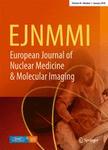版权所有:内蒙古大学图书馆 技术提供:维普资讯• 智图
内蒙古自治区呼和浩特市赛罕区大学西街235号 邮编: 010021

作者机构:EHIME UNIVSCH MEDDEPT RADIOLSHIGENOBUEHIME 79102JAPAN UNIV PITTSBURGHMED CTRDEPT NUCL MEDPITTSBURGHPA 15213
出 版 物:《EUROPEAN JOURNAL OF NUCLEAR MEDICINE》 (欧洲核医学与分子成像杂志)
年 卷 期:1994年第21卷第7期
页 面:597-603页
核心收录:
学科分类:0831[工学-生物医学工程(可授工学、理学、医学学位)] 100207[医学-影像医学与核医学] 1006[医学-中西医结合] 1002[医学-临床医学] 1001[医学-基础医学(可授医学、理学学位)] 08[工学] 1010[医学-医学技术(可授医学、理学学位)] 100106[医学-放射医学] 1009[医学-特种医学] 10[医学] 100602[医学-中西医结合临床]
主 题:SINGLE-PHOTON EMISSION TOMOGRAPHY NONUNIFORM ATTENUATION CORRECTION TRANSMISSION DATA ACQUISITION ITERATIVE EXPECTATION MAXIMIZATION ALGORITHM ACCELERATED EXPECTATION MAXIMIZATION ALGORITHM
摘 要:We previously reported that brain single-photon emission tomography (SPET) images could be improved by using an attenuation coefficient map constructed with transmission data and the iterative expectation maximization (EM) algorithm. However, the conventional EM algorithm (CEM) typically requires 30-80 iterations to provide acceptable results, limiting its clinical applicability. Several methods have been proposed to accelerate the EM algorithm. The purpose of this study was to search for a practical method for accelerating the EM algorithm. The methods investigated here include the accelerated EM algorithm (ACEM) using additive correction, ACEM using multiplicative correction, and Tanaka s filtered iterative reconstruction method (FIR). These methods were assessed by simulated SPET studies of a phantom incorporating nonuniform attenuation and by reference to clinical brain SPET data. In the simulation studies, the above methods were evaluated by using three parameters (root mean square error, log likelihood value, and contrast recovery coefficient);the results showed that FIR had an advantage over other methods in terms of all parameters. The results obtained using the clinical data demonstrated that FIR could reconstruct acceptable images in only five iterations. These results show that FIR offers significant advantages over CEM or other ACEMs, indicating that FIR can make the EM algorithm practical for clinical use in SPET